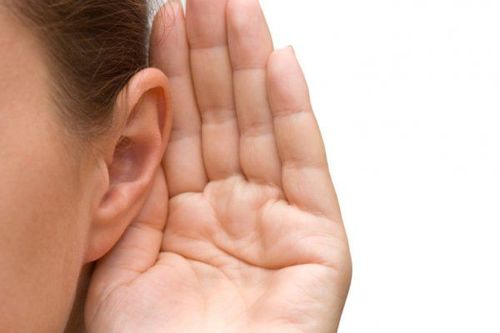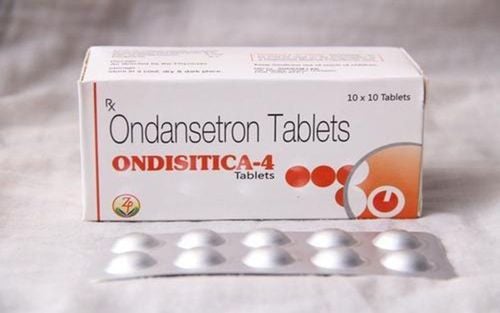This is an automatically translated article.
Brivaracetam is an antiepileptic drug, indicated in the treatment of partial onset seizures in patients with epilepsy. The following article provides you with information about the uses and precautions when using Brivaracetam.
1. What does Brivaracetam do?
Brivaracetam is an anticonvulsant, a pyrolidine derivative.
Brivaracetam dosage form and content:
Oral tablet: 10mg content; 25mg; 50mg; 75mg and 100mg. Solution for intravenous injection: 10mg/ml. Oral solution: 10mg/ml. Mechanism of action:
Brivaracetam binds SV2A with high affinity. SV2A plays a role in precoding by regulating synaptic GABA release. Through binding to SV2A, it is thought that Brivaracetam exerts anti-epileptogenic effects. Brivaracetam also has an inhibitory effect on Na channels, which may contribute to the anti-epileptogenic effect. The exact mechanism of action of the anti-epileptogenic Brivaracetam is still unknown. Indications:
Brivaracetam is an antiepileptic drug, also known as an anticonvulsant. Brivaracetam is indicated for the treatment of partial-onset seizures in patients with epilepsy. Brivaracetam is for oral use in adults and children 4 years of age and older. Brivaracetam injection is for use in patients 16 years of age and older. Brivaracetam is contraindicated for use in the following cases:
Hypersensitivity to Brivaracetam or any other ingredient in the drug. Children under 1 month old.
2. How to take Brivaracetam
How to use:
Treatment with Brivaracetam can be started by oral or intravenous route. There is no need for gradual dose titration at the start of treatment. The time to take Brivaracetam is not related to the meal, it should be taken at the same time of the day. Take the tablet, do not chew or crush the tablet. Brivaracetam oral solution does not need to be diluted when used. Dosage for adults:
Treatment of partial seizure/epileptic disorders:
Oral: 50mg/time x 2 times/day (total daily dose is 100mg). The dose may be reduced to 25 mg/time x 2 times/day or increased to 100 mg/time x 2 times/day depending on individual patient response and tolerability. Intravenous route: 50mg/time x 2 times/day (total daily dose is 100mg). The dose may be reduced to 25 mg/time x 2 times/day or increased to 100 mg/time x 2 times/day depending on individual patient response and tolerability. Clinical experience with intravenous use is limited to 4 consecutive days of treatment. Dosage for children:
Children 16 years of age and older:
Oral: 50mg/time x 2 times/day (total daily dose is 100mg). The dose may be reduced to 25 mg/time x 2 times/day or increased to 100 mg/time x 2 times/day depending on individual patient response and tolerability. Intravenous route: 50mg/time x 2 times/day (total daily dose is 100mg). The dose may be reduced to 25 mg/time x 2 times/day or increased to 100 mg/time x 2 times/day depending on individual patient response and tolerability. Clinical experience with intravenous use is limited to 4 consecutive days of treatment. Children from 1 month to 16 years old:
< 11 kg: Initial dose: 0.75 - 1.5mg/kg, orally 2 times/day. Maintenance treatment dose: 0.75 - 3mg/kg, taken 2 times/day. 11kg - <20kg: Initial dose: 0.5 - 1.25mg/kg, taken 2 times/day. Maintenance treatment dose: 0.5 - 2.5mg/kg, taken 2 times/day. 20kg - <50kg: Initial dose: 0.5 - 1mg/kg, orally 2 times/day. Maintenance treatment dose: 0.5 - 2mg/kg, taken twice a day. > 50kg: Initial dose: 25-50mg, taken 2 times/day. Maintenance dose: 25-100mg, 2 times/day. Dosage for other subjects:
Hepatic impairment: Patients with any degree of liver failure should start with a starting dose of 25mg/time x 2 times/day. Do not use more than 75mg / time x 2 times / day. Renal impairment: No dose adjustment of Brivaracetam is required. Elderly: There are no specific dosing recommendations, usually starting with the lowest dose. Co-administration of Brivaracetam with Rifampin: The dose of Brivaracetam should be doubled. Discontinuation: Avoid abrupt discontinuation of Brivaracetam to reduce the risk of increased frequency of seizures and status epilepticus. Brivaracetam drug overdose and treatment:
Brivaracetam overdose may experience dizziness, drowsiness. In case of overdose of Brivaracetam, immediately go to the nearest medical facility for timely treatment. Missing a dose of Brivaracetam and what to do:
If you forget to take a dose of Brivaracetam, take it as soon as possible. If it is almost time for the next dose, skip the missed dose and take the next dose as scheduled. Also, do not double the dose of Brivaracetam.
3. Side effects when using the drug Brivaracetam
Some undesirable effects when using Brivaracetam have been reported:
Nervous system: drowsiness or sedation (27%), dizziness and disturbances in gait and coordination (16%); fatigue, weakness, insomnia, irritability, sedation and possibly coma. Psychiatric: psychosis, anxiety, depression, insomnia, irritability, suicidal ideation, aggression, agitation. Allergic and hypersensitivity reactions: injection site pain, hypersensitivity, bronchospasm, angioedema. Metabolism: weight loss, appetite reduction. Hematology: neutropenia, leukopenia. Gastrointestinal: nausea, vomiting, constipation. Respiratory: cough, flu, upper respiratory tract infection. In case of serious side effects, patients need to stop using Brivaracetam and take them to the nearest medical facility for timely treatment.
4. Note when taking Brivaracetam
Risk of suicide:
Increased risk of suicide (suicidal ideation or behavior) seen in studies using different anticonvulsant drugs in patients with epilepsy, psychosis ( bipolar disorder, anxiety, depression) and other conditions (migraine, neuralgia). The risk of suicide was increased in patients 1 week after starting anticonvulsants and continued for 24 weeks. The risk is higher when used in patients with epilepsy than in patients using anticonvulsants for other conditions. Closely monitor patients currently or initiating anticonvulsant therapy for changes in behavior that may indicate the emergence or worsening of suicidal, depressive thoughts and behavior. Anxiety, hostility, agitation, insomnia, and mania can be precursors of emerging suicidality. Balance the risk of suicide with the risk of untreated disease. Nervous effects:
During the use of Brivaracetam drugs may occur neurological undesirable effects: dizziness, gait or coordination disorders (nystagmus, disturbances in balance, coordination). abnormality, ataxia), drowsiness and fatigue. Neurological symptoms usually appear early in the course of treatment but can occur at any time. Monitor patients for neurological side effects, advise patients not to drive or operate machinery until the effects of the drug are known. Psychiatric Effects:
Possible psychotic effects, including non-psychotic symptoms (irritability, nervousness, aggression, anger, aggression, agitation, anxiety, restlessness, anxiety, irritability tears, depression, apathy, mood swings, psychomotor hyperactivity, abnormal behavior) and psychotic symptoms (psychosis, paranoia, hallucinations, acute psychosis). Monitor patients for psychiatric side effects. Discontinuation of treatment:
Abrupt discontinuation of Brivaracetam may increase the frequency of seizures and the risk of status epilepticus. Lactation: Brivaracetam is excreted in the milk of rats. It is not known whether the drug is excreted in human milk. Consult your doctor before using the drug. Ability to drive and use machines:
Patients should not drive or perform work requiring alertness until they have been fully evaluated for the effects of the drug on the nervous system and psyche. Brivaracetam is an antiepileptic drug, indicated in the treatment of partial onset seizures. Dosage is adjusted according to the condition and clinical response of the individual patient. Before taking Brivaracetam, it's best to consult your doctor for instructions on how to take it safely and effectively.













